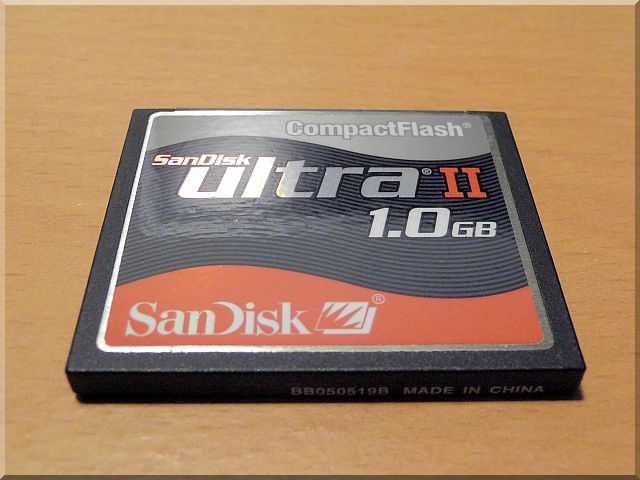While there are a lot of types of flash cards used in digital devices, most camera manufacturers adopted the following formats: Compact Flash (CF), Secure Digital (SD), Memory Stick (MS) and Multimedia Card (MMC).
The Compact Flash is used mostly in DSLR cameras and some video recorders. The CF can accommodate large and very large storage (from few GB to hundreds of GB) and it is capable of achieving very high transfer speeds (up to 166 MB/s recently); professional DSLRs may require sustained recording speeds of 20 MB/s or higher while enthusiast DSLRs may cope with 5…10 MB/s.
The majority of the digital compact cameras use Secure Digital cards because of their smaller size and the wide availability at a lower cost than CF (due to their usage in many other portable devices).
The SD cards come in three different form factors: normal, miniSD (mSD) and microSD (uSD or µSD). The smaller formats can be used as larger ones through simple adapters usually sold with the cards.
The capacity (up to 2 TB) and the speed (class 6 and 10 are very common today and up to 100 MB/s maximum achievable rate) of these cards increased significantly in the recent years closing the gap with CF (at least theoretically). Most compact cameras that take SD will benefit from capacities between 2 and 16 GB and Speed Class 6 or higher (especially if they are capable of HD video recording).
The Memory Stick was created by Sony and it is used mostly in their cameras. Since their release the MS cards evolved allowing large capacities (up to 128 GB) and higher speeds but their adoption by other camera manufacturers was slow and inconsistent. Eventually, Sony began to support the SD cards in their devices aside MS; furthermore, Sony is releasing its own line of SD cards ending de facto the format war between SD and MS.
The Multimedia Card is an open format standard physically similar to SD and, currently, the slightly thinner, pin-compatible MMCs can be used in almost any device that supports SD. Despite its open status and popularity between engineers and hobbyists, the MMC format was not adopted by too many camera manufacturers. One reason is the speed that is limited to about 2.5 MB/s (a recent enhancement of the MMC standard increased the limit to about 50 MB/s). Eventually, some devices that use SD can support MMC format as well because of mechanical and electrical interface compatibility. Usually, the MMC capacities and speeds are smaller than SD.
Compact camera users will definitely be interested by the SD cards supported by most camera manufacturers today. In the next post I will offer some advice on buying and using SD cards in your camera. For the moment, review your card inventory or browse the Internet looking at different cards and just imagine buying some for your camera. What are your criteria when selecting a card? Capacity? Speed? Reliability? Cost? Write your comments and I’ll be happy to discuss with you.



